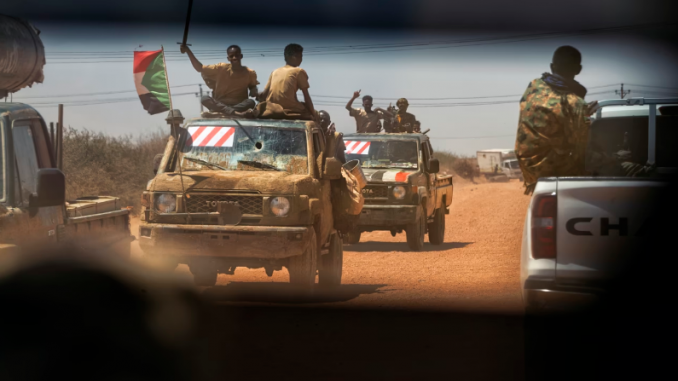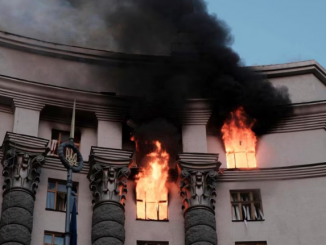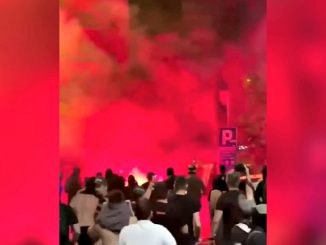Sudan’s War: A Symphony of Erasure
In the tumultuous wake of Sudan’s 2019 popular uprising and the ousting of Omar al-Bashir, a fragile power—shared uneasily by General Abdel Fattah al-Burhan and paramilitary leader General Hemedti—fractured into violent rivalry. By April 2023, this power struggle morphed into full-scale civil war between the Sudanese Armed Forces (SAF) and the Rapid Support Forces (RSF).
Why “Nihilistic”?
A recent feature in The Atlantic documents the conflict’s raw destructiveness: both sides perpetrate atrocities—genocide, ethnic cleansing, indiscriminate bombing, starvation tactics, even possible chemical weapons usage—within a battle seemingly devoid of meaning or hope.
The Unraveling: Humanitarian Collapse at Scale
-
Displacement & Humanitarian Needs
Over 14 million people uprooted, making Sudan home to the world’s largest internal displacement crisis. Nearly two-thirds of the population—some 30 million people—are in dire need of humanitarian aid.
-
Famine & Starvation
Man-made famine is pervasive. At least 700,000 children suffer acute malnutrition. In regions like Darfur and Kordofan, famine conditions have been officially confirmed. Both warring parties bear responsibility—RSF through looting, SAF through aid blockades.
-
Atrocities Against Civilians
The RSF has been accused of genocide and mass killings—notably the Masalit massacres, where 10,000 to over 100,000 members of the Masalit ethnic group were targeted. The RSF also executed a brutal campaign at the Zamzam refugee camp, killing as many as 2,000 civilians including women and aid workers, with mass sexual violence and abductions reported.
-
Destruction of Heritage & Institutions
Historic sites like the Republican Palace, university libraries, museum collections, and UNESCO-designated heritage sites have been shelled or ransacked. The RSF reportedly destroyed 90% of national museum holdings in Khartoum
-
Humanitarian Worker Targeting
Sudan has become one of the world’s most dangerous countries for aid workers. Hospitals, clinics, and aid convoys face constant attacks, crippling public health and emergency response.
A Proxy Theatre of Despair
Sudan’s civil war is not just a domestic implosion—it has morphed into a crowded proxy battlefield where foreign powers treat Sudanese soil as a chessboard, and its people as expendable pawns. The war’s nihilistic nature is magnified by the fact that many of the combatants and their suppliers have no stake in Sudan’s future beyond their own strategic or economic advantage.
1. The United Arab Emirates: Arming the RSF
Evidence from intercepted arms shipments and eyewitness accounts points to the UAE’s role as a primary arms supplier to the Rapid Support Forces. Cargo planes linked to the UAE have reportedly ferried weapons, drones, and ammunition to RSF-held territories via Chad. The RSF’s control over gold mines in Darfur—many run by companies with Emirati links—provides both sides with a profitable quid pro quo: weapons for resources. For the UAE, RSF dominance offers influence in the Red Sea corridor and access to gold that can bypass Western scrutiny.
2. Iran and the SAF’s Drone War
As the RSF strengthened, the Sudanese Armed Forces (SAF) turned to Iran for military support. Iranian-made armed drones have been spotted in SAF airstrikes, giving them a precision advantage against RSF positions and even civilian zones. For Tehran, the SAF is a strategic partner in countering Gulf influence and establishing a foothold along the Red Sea, a vital global shipping artery. For Khartoum’s generals, Iranian drones are one of the few bargaining chips they have left.
3. Russia’s Shadow: Gold, Guns, and Wagner
Before the war, Sudan was already a Russian gold partner via the Wagner Group’s mining concessions. Even after Wagner’s formal dissolution, its successor networks reportedly continue to help smuggle Sudanese gold through the UAE to fund Moscow’s own war in Ukraine. Russia benefits from chaos—an unstable Sudan keeps Western-aligned governments in the region weak and distracted. Sudan, in turn, becomes a node in the global web of sanctioned trade, with little regard for its humanitarian cost.
4. Egypt’s Balancing Act
Egypt officially supports the SAF, its historical ally, fearing that an RSF victory could destabilize its southern border and threaten Nile water access. Yet Cairo’s involvement is cautious, shaped by its own economic crisis. Military aid and intelligence-sharing have occurred, but Egypt has avoided open intervention that could provoke wider regional escalation.
5. Chad, South Sudan, and the Borderland Wars
Sudan’s porous borders mean neighboring states are both victims and participants. Chad, while officially neutral, is accused of allowing arms to pass to RSF fighters. South Sudan, desperate for stability to keep its oil exports flowing, sometimes cooperates with whichever faction controls pipelines. These shifting loyalties underscore that Sudan’s war is a regional commodity exchange of violence, with loyalty often traded for cash or resources.
6. The West’s Limited Hand
While the U.S. and European Union have condemned atrocities and imposed sanctions on both RSF and SAF leaders, their influence is hampered by distance and competing crises. Western aid agencies face impossible conditions on the ground, and without sustained pressure on regional backers like the UAE or Iran, their condemnations remain symbolic. Sudanese civilians see this not as neutrality but as abandonment.
The Consequences of Proxy Warfare
These overlapping agendas have turned Sudan into a place where no faction truly represents the Sudanese people. Instead, the conflict serves foreign ambitions: control over gold reserves, dominance of the Red Sea shipping lanes, and access to strategic air corridors. The result is a war without clear political goals—only transactional gains. Civilians become collateral damage in a struggle shaped as much in foreign capitals as on Sudanese battlefields.
Survival: Slivers of Resistance and Humanity
Even in a war that many observers now call the most nihilistic conflict on Earth, Sudan’s civilians have refused to surrender entirely to despair. From ruined city blocks to desert refugee camps, a quiet defiance is unfolding—not through military might, but through acts of care, ingenuity, and stubborn solidarity.
1. The Emergency Response Rooms (ERRs)
Born during the 2019 uprising, ERRs were grassroots neighborhood networks meant to organize protests, share food, and coordinate medical care. When war erupted, these informal committees became lifelines. In Khartoum’s besieged neighborhoods, ERR volunteers—often young doctors, students, and community elders—work without pay to evacuate the wounded, source scarce medicines, and keep communication alive when power grids fail. Many operate in secrecy to avoid both RSF and SAF harassment.
2. The Underground Education Movement
With schools and universities shuttered, a growing number of Sudanese educators are setting up secret “classrooms” in safe houses or online. Teachers stream lessons via unstable internet connections to children scattered across Sudan and the diaspora. In some towns in Darfur, lessons are written in chalk on abandoned walls—an act that feels almost rebellious in a war designed to erase normal life.
3. Women’s Mutual Aid Networks
Sudanese women, disproportionately affected by sexual violence and displacement, have taken the lead in local survival economies. In displacement camps, they organize communal kitchens, weaving groups to produce and sell mats or baskets, and discreet support circles for survivors of assault. Beyond material aid, these networks restore dignity in a context that has stripped so many of their homes, livelihoods, and safety.
4. Diaspora Lifelines
Sudanese communities abroad—especially in the Gulf, Europe, and North America—have become crucial in sustaining those left inside the country. Informal remittance routes, crowdfunding campaigns, and volunteer-driven “digital humanitarian hubs” supply food, satellite phones, and even tuition for displaced students. These flows often bypass official aid channels, which are crippled by blockades or looting.
5. Artistic and Cultural Defiance
In refugee camps and destroyed neighborhoods, artists continue to paint murals, write poetry, and play music that celebrates Sudan’s heritage. Some of these works directly memorialize massacres like those in El Geneina or Zamzam, turning public walls into archives of resistance. Despite the destruction of Khartoum’s national museum, grassroots archivists have hidden artifacts, photographs, and manuscripts—defying attempts to erase Sudan’s historical memory.
6. Faith and Moral Leadership
Local imams, priests, and community elders have mediated temporary ceasefires so civilians can bury their dead, receive food drops, or evacuate children. In some cases, these truces last only hours, but they are enough to save lives. Religious and tribal leaders also play a subtle role in holding together the social fabric, reminding communities that their shared humanity outlasts any militia’s reign.

 Implications: The Cost of a War Without End
Implications: The Cost of a War Without End Overall Takeaway: Between Despair and Defiance
Overall Takeaway: Between Despair and Defiance




Be the first to comment